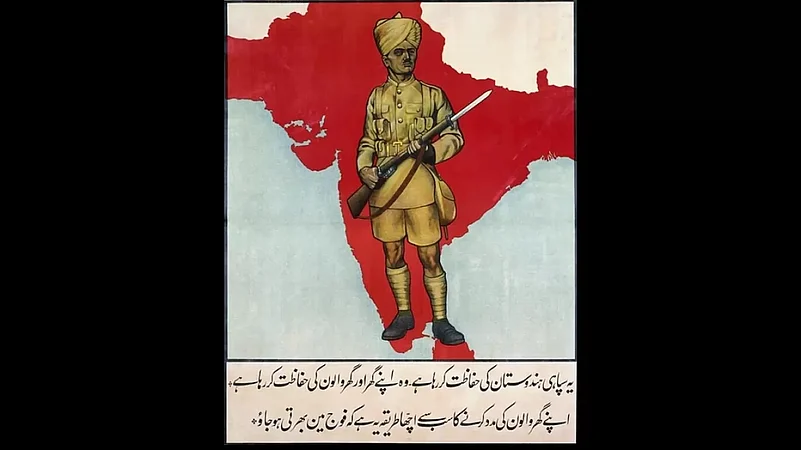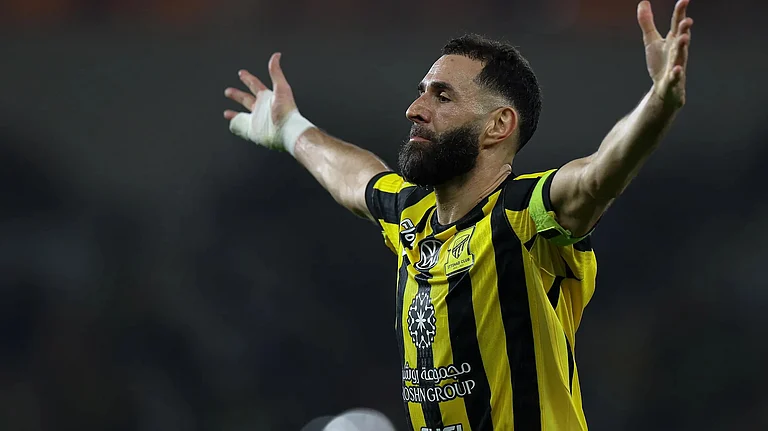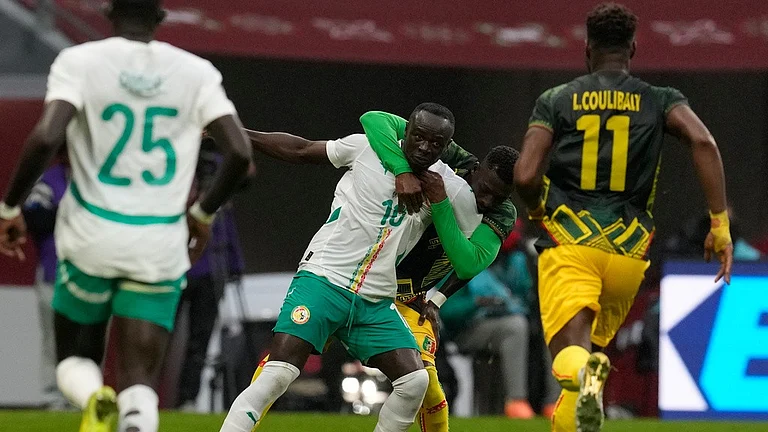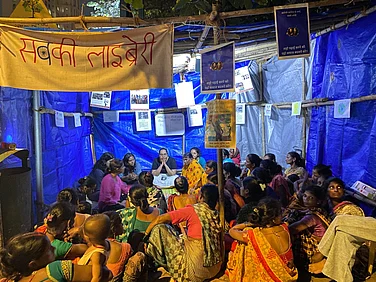‘Our flag does not fly because the wind moves it, it flies with the last breath of each soldier, who died protecting it’. The guns of these soldiers have fallen silent but the tales of their sacrifice and valour have not. These are meticulously preserved through beautifully crafted 3D murals, photo galleries, sculptures, paintings and wallpapers at the Infantry Research Centre & Museum, Mhow now known as Ambedkar Nagar. The museum, which opened to the public on Vijay Diwas, i.e. 16th December, last year is dedicated to the Indian Infantry and is the first of its kind in the country. It is as important to the Indians as the National Infantry Museum and Soldier Center located in Columbus, Georgia, is for the Americans.
Established under the aegis of the Infantry School, Mhow, it has been designed as a living concept museum, since the details are updated regularly. “Infantry School is the alma mater of Infantry Officers. And, it is the Centre of Excellence” says Lt Gen P N Ananthanarayanan, SM, Commandant, Infantry School, Mhow. “Therefore, it is ideal that the Infantry Research Centre and Museum is located here.” The Infantry School, established on 1st April 1948 in Mhow, trains over 7,500 personnel annually. More than 30 countries have been sending their personnel for training at the school, and some of them have risen to the highest ranks in India and abroad.
This three-storey museum, spread over two acres on Mall Road, in the midst of a sprawling garden cum nursery where a Martyr’s Memorial to honour soldiers who died after 1947 is planned, originally had 17 rooms now segmented into 30 zones following a timeline, and a capacity till 2040. It is a well-equipped repository of all data about the Indian Infantry especially post-15th August, 1947.
“It is just not an infantry museum but the story of modern nationhood,” says Colonel Indranil Biswas of the 12th Jat Regiment whose vision, passion and meticulous research are behind curating this world-class museum which showcases the Indian Infantry’s history in a chronological sequence from 1747 onwards
A perfect example of the evolution of modern nation-building, the structure is built from funds sanctioned by the Centre and the interiors from the contributions of the jawans belonging to the 27 regiments who wanted to tell the story of their struggles and sacrifice to their countrymen. Colonel (retd) Sudhir Vasudev of the Punjab Regiment oversaw the construction of the building which has the national flag fluttering at 105 feet in its compound. The idea to build this state-of-art national level training hall cum research centre was mooted by then Chief of Army Staff N C Vij in 2003. Popular with the public, the Museum is placed on the tourist landmark of Madhya Pradesh. It has a website where bookings can be made online and is using social media to reach out to the citizens.
“Thirty per cent of the documented infantry history is prior to Independence and the balance post-independence,” says Colonel Rajesh Kanojia, Director of, the Infantry Museum. For the first time, the use of various colours is seen in the Army murals. A 3D mural at the entrance depicts the resistance offered to foreign invaders. With the Battle of Hydaspes at the centre, it showcases Porus’ resistance to the first foreign attack by Alexander in 326 BC. Another mural, with the tagline ‘Nation first always’ depicts the landings on Srinagar airfield in 1947, the Kargil War, the indomitable spirit of the Infantry to fight in all terrains and the future-ready Infantry soldier.
A soldier charging out of a 40 feet high wall, in the Central Atrium, symbolises that there is no obstacle for the Infantry. Equally captivating are installations of infantrymen on a Mobius strip -- engaged in forms of combat sending out a message – ‘what your forefathers have done to defend the country, you also do when your time comes.’ The whole installed art depicts the philosophy of life, wisdom and the inevitability of war till every human being becomes a Buddha. “The circle represents the infinite need of the infantry as long as there are wars,“ says Col Biswas who served in the Indian Peace Keeping Force in Sri Lanka and sustained two bullet injuries there. Comprising foot soldiers, Infantry has been the predominant fighting arm of all armies since ancient times. And, the ultimate decider of victory in war. Be it war or peace, the Army is configured around it.
The museum, being built in three phases, comprises several layers keeping different audiences in mind – the public, military men and a research centre. Not only does it evoke nationalism and pride but introduces and connects the youth, with the history and the making of the modern Indian Infantry; the gallant Victoria Cross, Param Vir Chakra and Ashoka Chakra awardees; heroes of the Infantry; the two Field Marshalls, various chiefs of the army staff; the 27 regiments and the travails of the foot soldier in trenches and in different terrains during wars, counter-insurgency operations, natural calamities and international operations and much more. Whatever the circumstance, an Infantryman is taught to deliver.
“We have clips of operations but these don’t speak. Someone who has been out there can give a better perspective,” says Lt Gen Ananthanarayanan disclosing that veterans who took part in operations, like Kargil, are going to narrate in a story form to enable youngsters to get an insight.
To the millennial, the Museum offers answers to how politically, diplomatically and militarily the British established and maintained their supremacy over India for almost 200 years by defeating the divided native rulers and ousting their European competitors through various wars – the battles of Plassey and Buxar – the game changer, Carnatic and Anglo-Mysore wars, besides the Anglo Sikh war to name a few. How the private army of the East India Company was raised with the help of Soldiers of Fortune to wrest back Fort St. George from the French, the birth of the East India Company Army eventually taken over by the British Army, later Christianised as the British Indian Army -- the precursor of Modern Indian Army. Through the display of contrasting uniforms and superior weapons and rifles like Enfield Patten 1853 which trigged the Sepoy Mutiny; a discerning visitor understands why the European armies were better equipped than native ones who fought wars without basic necessities like shoes. The carefully researched interiors are based on true events. The sculpture of a sepoy tied to a cannon reveals how the British invoked fear among Indians post Mutiny; and implemented the Martial Race Theory in the recruitment of Indian soldiers thereafter.
India contributed the largest number of troops to fight alongside the British during the two world wars. With a corner dedicated to Netaji Subash Chandra Bose, the Museum provokes a visitor to think about who could have posed a greater threat to the British -- Gandhiji with his philosophy of non-violence or Netaji Subhas Chandra Bose and the armies he helped raise? Could Bose, or the Indian National Army raised in Singapore, and later headquartered in Burma, have the potential to galvanise the public and trigger Independence? Was this a significant reason why the British felt impelled to free India in 1947, especially when they had not kept their promise of awarding self-rule to India after World War I and had emerged victors as part of the Allied Forces?
Post Independence, the operations the Infantry was engaged in, included the battles for Jammu and Kashmir from October 1947 till 31 December 1948, the Sino-Indian War of 1962, the two Indo-Pak wars of 1965 and 1971, Operation Meghdoot in Siachin in 1984 and Kargil War in 1999 have been documented. In fact, 3D models of the Eastern and Western theatres enable one to understand how the War of 1971 was fought on two fronts. Renowned Pune-based sculptor Abhijit R Dhondphale has painstakingly crafted a 3D model of the famous Surrender Ceremony in Dhaka, 1971, beautifully capturing the facial expressions of Lt Gen A A K Niazi of Pakistani Army and Lt Gen Jagjit Singh Arora of the Indian Army. While the former is signing the Instrument of Surrender in the face of defeat, the latter has an expression of victory. Dhondephale, who was sculpting this masterpiece when the first lockdown was imposed, had to recast the mould of Arora’s military pagdi to get the correct layers of pleats, “Sculptures are not photos. The personalities of the subjects have to come out,” he says. The sculptor has managed to draw out the personalities of the pious king Chattrapati Shivaji, Field Marshal K M Carriappa and the blue-eyed Field Marshal Sam Manekshaw through his craft.
While the work on the ground floor is complete, work on the remaining floors is underway. The first storey has a Regimental room which showcases the history of the 27 Infantry regiments under one roof. This will also house an exhibition area and other rooms of special interest related to the Kargil War of 1999, as well as an enclosure for the period 2000-2040, Counter Insurgency, UN Mission Special Operation, Training of the Soldier and the Officer.
The Second Floor will have a Room about the Infantry School, the evolution of Mhow town from 1818 onwards and a section on the making of the museum. This will also have a Research Centre for various regiments, institutional and formation memorabilia and an area depicting ‘Infantry Dresses: Equipment and Weapons’ through the ages. In fact, India’s first Chief of Defence Staff late Gen Bipin Rawat, who inaugurated the museum in 2019, donated a sword received as a gift from Russia, and Union Minister Gen. V K Singh, a former Army Chief, presented his uniform.
During his visit to the museum as the 27th Chief of the Army Staff, Late Gen Rawat wrote in the visitor’s book, “......We look forward to the finished product emerge as a piece of Art that will make every Infantry soldier proud of the Bayonet, that is so dear to all of us.” Impressed, Gen Robert Kibochi, Chief of the Kenyan Defence Staff, who had trained as a Captain in M C T E Mhow, sent a nine-member team to see the museum and invited Biswas to Kenya to advise on the Military Gallery in their upcoming National Museum.
A Chair of Excellence was in the process of being created, Lt. Gen Ananthanarayanan said. A very interesting area which is going to be developed will be a fully immersive room where the last 200 yards of the Infantry battle in the plains can be experienced by a visitor.
While touring through the labyrinth of rooms, and studying every piece of information carefully, the countrymen, especially the youth, will connect with the struggles of infantrymen and understand the vital role they have played in building a modern Indian nation-state. “They are the mud, rain, frost and wind boys. They have no comforts, and they learn to live without the necessities. And in the end, they are the guys that wars can’t be won without.” A Salute to the Infantry -- the Ultimate!
(Vinati Bhargava Mittal is an independent journalist based in Indore and has previously worked for the Press Trust of India, New Delhi besides other national media houses)





















